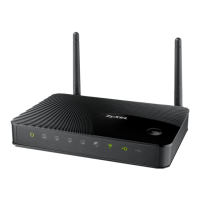
Do you have a question about the ZyXEL Communications NBG-419N v2 and is the answer not in the manual?
| Input current | 1 A |
|---|---|
| Rack mounting | No |
| USB ports quantity | 1 |
| Supported protocols | DHCP, PPPoE, PPTP, L2TP |
| WLAN data transfer rates supported | 300 Mbit/s |
| DHCP client | Yes |
| Routing protocols | IP |
| Antennas quantity | 2 |
| Antenna gain level (max) | 2 dBi |
| Web-based management | - |
| Ethernet LAN (RJ-45) ports | 4 |
| Security algorithms | 64-bit WEP, 128-bit WEP, WEP, WPA, WPA-PSK, WPA2, WPA2-PSK |
| VPN support | IPSec, PPTP, L2TP |
| Cabling technology | 10/100Base-T(X) |
| Networking standards | IEEE 802.11b, IEEE 802.11g, IEEE 802.11n |
| Ethernet LAN data rates | 10, 100 Mbit/s |
| Ethernet LAN interface type | Fast Ethernet |
| Product color | Black |
| LED indicators | LAN, Power, USB, WAN, WLAN |
| Safety | CE LVD |
| Electromagnetic compatibility | CE, FCC |
| Storage temperature (T-T) | -30 - 70 °C |
| Operating temperature (T-T) | 0 - 40 °C |
| Storage relative humidity (H-H) | 20 - 95 % |
| Operating relative humidity (H-H) | 20 - 90 % |
| Package depth | 60 mm |
| Package width | 272 mm |
| Package height | 194 mm |
| Package weight | 660 g |
| Wi-Fi standards | 802.11b, 802.11g, Wi-Fi 4 (802.11n) |
| Top Wi-Fi standard | Wi-Fi 4 (802.11n) |
| Output voltage | 12 V |
| Power consumption (typical) | 8.5 W |
| Depth | 111 mm |
|---|---|
| Width | 159 mm |
| Height | 23 mm |
| Weight | 230 g |
Introduces the router's features, applications, and management methods.
Details the utility for sharing USB devices connected to the router.
Guides users through configuring the router's Internet connection.
Explains how to access and navigate the router's web-based configuration interface.
Provides information on monitoring the router's status and network activity.
Introduces the different operating modes for the router device.
Details the simplified interface for router configuration.
Explains the router's functionality and status in its default operating mode.
Guides on configuring the router to function as a wireless access point.
Explains how to configure the router as a wireless client to connect to an access point.
Provides step-by-step guides for common router setup and configuration tasks.
Details the configuration and security settings for the wireless network.
Guides on configuring the router's Wide Area Network connection for Internet access.
Explains how to configure Local Area Network settings and IP addresses.
Details the configuration and management of the DHCP server.
Explains NAT functionality for IP address translation and port forwarding.
Guides on configuring Dynamic DNS for remote access using domain names.
Explains how to configure static routes for network traffic management.
Details the configuration of Routing Information Protocol (RIP) for LAN routing.
Guides on enabling and configuring the firewall for network security.
Explains how to restrict web features and block websites using keywords.
Details how to configure bandwidth allocation for network applications.
Guides on configuring remote access for managing the router.
Explains the UPnP feature for automatic network device configuration.
Covers router maintenance tasks like firmware upgrades and backups.
Provides solutions for common router setup and operational problems.
Guides on configuring pop-up blockers and exceptions in Internet Explorer.
Details enabling JavaScript and Java permissions in browsers for optimal display.
Introduces the structure, function, and definition of IP addresses and subnet masks.
Explains subnetting for dividing networks and determining network size.
Discusses and illustrates scenarios of IP address conflicts and their resolutions.
Guides on configuring IP settings for Windows XP, Vista, and 7 operating systems.
Guides on configuring IP settings for Mac OS X versions 10.3 through 10.6.
Guides on configuring IP settings for Ubuntu and openSUSE Linux distributions.
Discusses ad-hoc and infrastructure wireless LAN topologies.
Defines and explains Basic Service Sets and Extended Service Sets in WLANs.
Explains wireless channel selection, collision prevention, and data fragmentation.
Details the IEEE 802.11g standard and introduces wireless security methods.
Explains 802.1x standard, RADIUS server, and EAP authentication types.
Details WPA and WPA2 wireless security standards and encryption methods.
Covers antenna gain, radiation patterns, types, and optimal positioning.
Lists common network services, their protocols, port numbers, and descriptions.
Provides copyright, disclaimer, and certification details for the product.
Lists FCC and Industry Canada compliance and interference statements.
Details the product's limited warranty terms, conditions, and service information.
Provides regulatory information for the EU and country-specific restrictions.
Lists important safety precautions for device installation and usage.
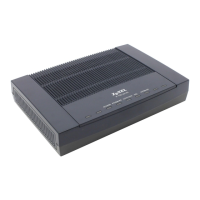
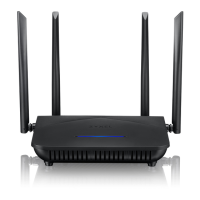

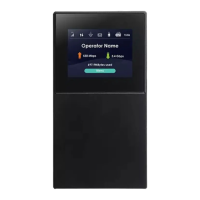

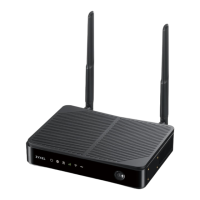


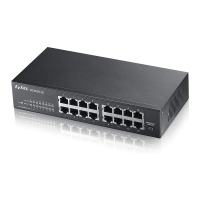
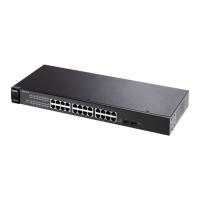


